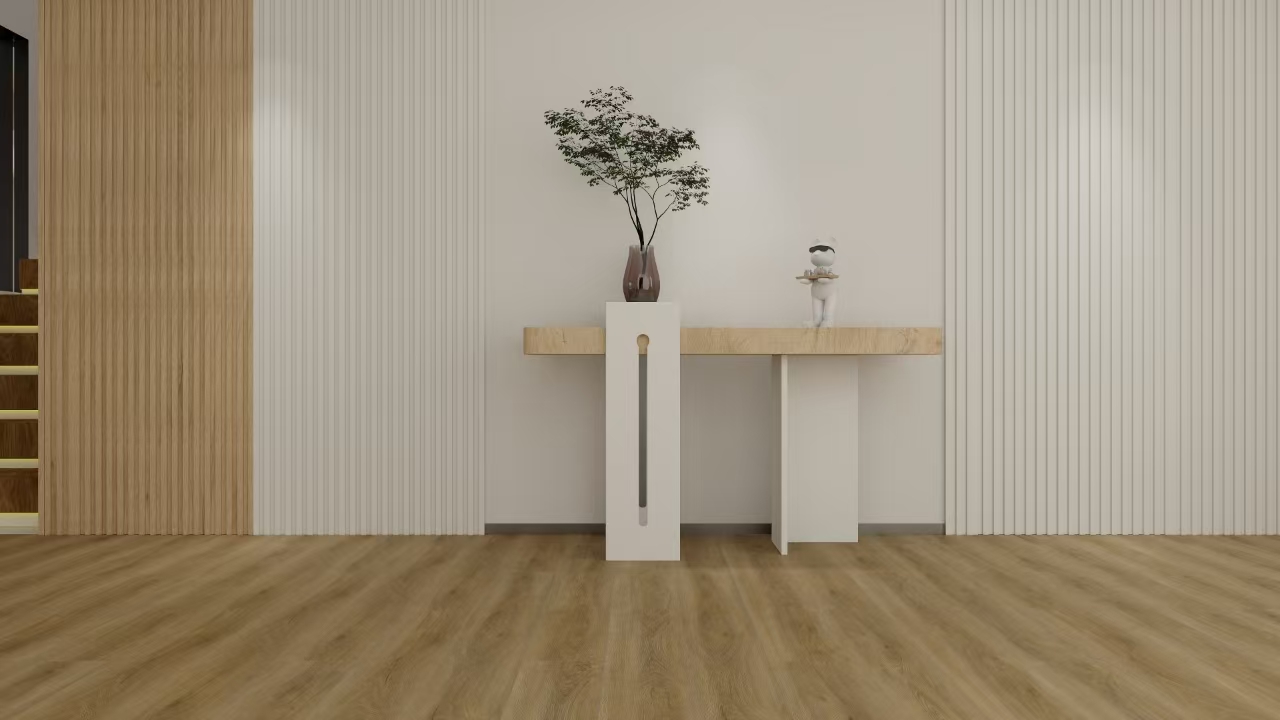
In recent years, luxury vinyl tile (LVT) flooring has gained popularity due to its durability, versatility, and aesthetics. With a wide variety of options on the market, choosing the right type of LVT flooring can be a daunting task. In this article, we will explore the various types of LVT flooring and provide valuable insights into how to choose the option that best suits your specific needs.

1. Self-adhesive LVT flooring
Glued LVT flooring, also known as dry-backed LVT, is installed by applying adhesive to the subfloor and then laying tiles or planks over it. This type of LVT flooring provides a permanent and secure installation, making it ideal for high-traffic areas and commercial spaces. Glued LVT provides a seamless look and allows for easy replacement of individual tiles when required.
2. Click on the LVT floor
Snap-on LVT flooring, also known as floating LVT, features a snap-in locking mechanism that allows planks or tiles to interlock without the use of adhesives. This type of LVT flooring is popular with DIY enthusiasts and homeowners looking for a hassle-free installation process. Click LVT is also suitable for areas with frequent fluctuations in humidity and temperature, as it can expand and contract without causing damage.
3. Bulk LVT flooring
Loose-lay LVT flooring is designed to be installed without adhesives or locking devices. Instead, tiles or planks are laid directly on the subfloor, and their weight and friction hold them in place. This type of LVT flooring is known for being easy to install and can be quickly removed and replaced when necessary. Loose lay LVT is an excellent choice for temporary flooring solutions or areas where access to the subfloor is required.
4. Rigid Core LVT Flooring
Hardcore LVT flooring, also known as SPC (Stone Plastic Composite) or WPC (Wood Plastic Composite), has a solid core that provides enhanced dimensional stability and impact resistance. This type of LVT flooring is very durable and suitable for areas prone to moisture, such as bathrooms, kitchens and basements. Rigid core LVT is available in a variety of styles that can mimic the look of natural wood, stone or ceramic tiles.
5. Printed film LVT flooring
Printed film LVT flooring utilizes advanced printing technology to create realistic designs and patterns that mimic the appearance of natural materials. This type of LVT flooring offers a cost-effective alternative to traditional hardwood, stone or ceramic tile while providing the same visual appeal. Printed film LVT is available in a variety of colors, textures and finishes, offering endless design possibilities.
When choosing the right type of LVT flooring for your space, there are several factors you should consider:
1. Durability: Consider the level of foot traffic and potential wear and tear in the area where the LVT flooring will be installed. For high-traffic areas, choose a durable and scratch-resistant option, such as rigid-core LVT.
2. Moisture Resistance: If your floor is exposed to moisture or humidity, such as in a bathroom or kitchen, choose a waterproof LVT option, such as a rigid core or loose LVT.
3. Installation method: Determine whether you prefer adhesive, snap-on, or loose installation based on your skill level, time constraints, and the specific requirements of your space.
4. Design and Style: Explore the various designs, colors and textures of LVT flooring to find a style that complements the aesthetics of your space.
5. Budget: Set a budget for your LVT flooring project and consider factors such as durability, warranty and maintenance requirements to explore options that provide the best value for your investment.
6. Underlayment: Certain types of LVT flooring may require underlayment for added cushioning, sound insulation, or moisture protection. Consider the specific underlayment requirements for the type of LVT floor you choose.
In summary, LVT flooring offers a versatile and practical solution for residential and commercial spaces. By understanding the different types of LVT flooring and considering key factors such as durability, moisture resistance, installation method, design and budget, you can make an informed decision when choosing the LVT flooring that suits your specific needs. Whether you choose glued, snap-on, loose lay, rigid core or printed film LVT, you can enjoy the benefits of a durable, low maintenance and visually appealing flooring solution.